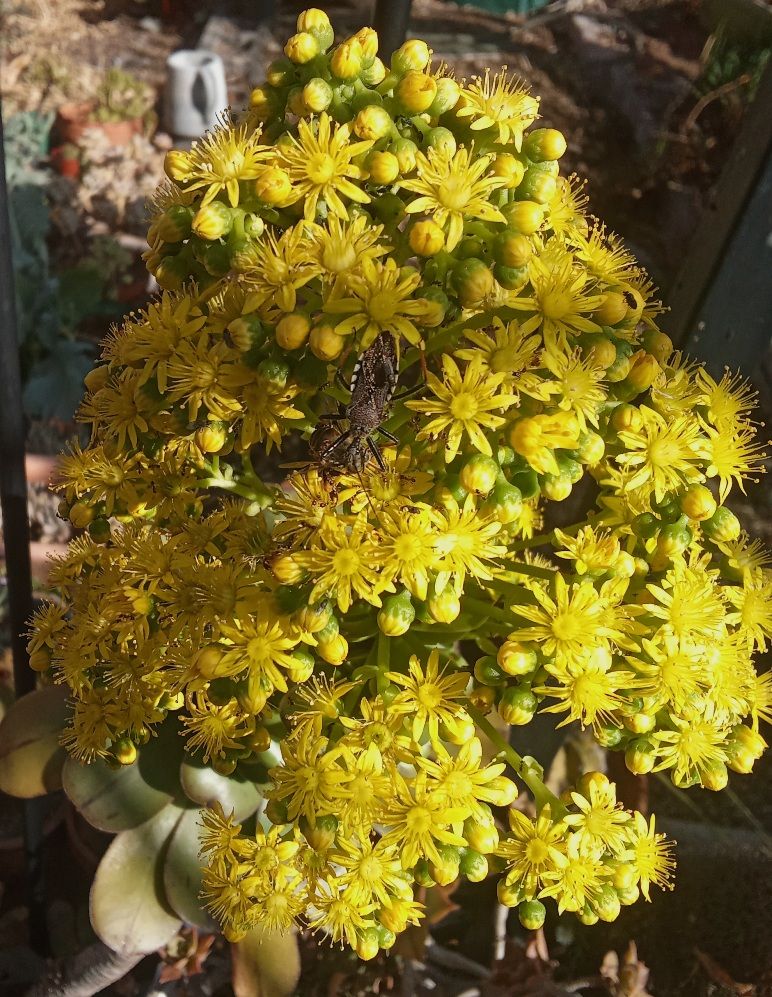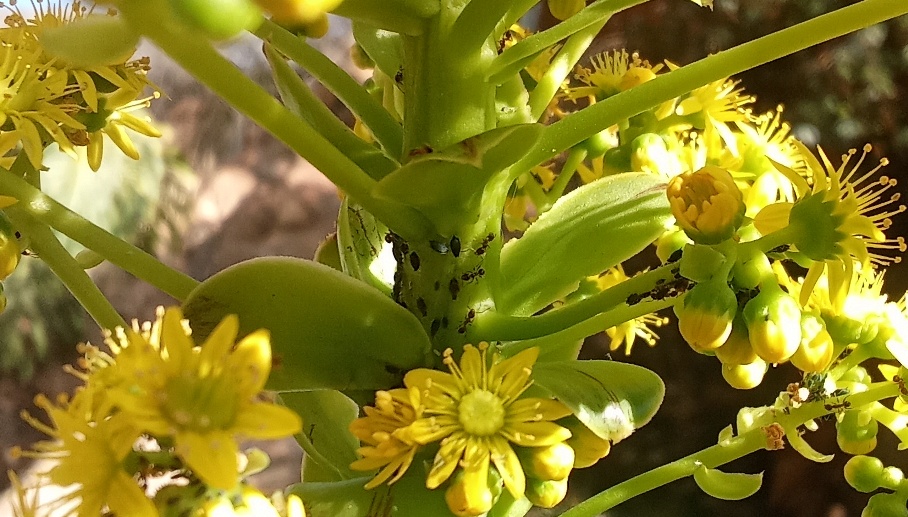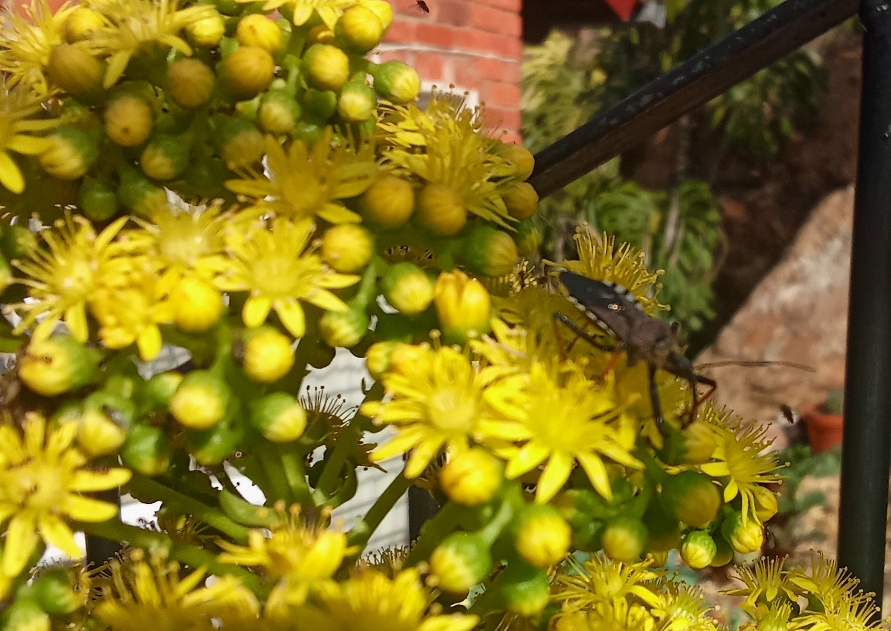I have a lot of Aeoniums blooming outside my front door and I noticed a large insect on one and went to take a closer look. There was an Assassin bug that had caught a honey bee and was feeding on it so I went to get my camera to record an interesting observation.

Up close, you can see the long proboscis that the assassin bug uses to pierce the prey's exoskeleton. it injects various fluids that liquefy the prey within and then it sucks up these body fluids. While they aren't venomous or aggressive, they will stab with the proboscis if feeling threatened and it's an extremely unpleasant experience (been there, done that)

Notice also the little black flies - there were many of them buzzing around the dead bee and they are called Jackal flies. They are attracted by the pheromones that the dying bee gives off and they come to feed off any body fluids they can get from the dying bee. I've observed them on Robber fly bee kills too.
You can also see some ants around the kill too: the ants don't pollinate these flowers, they are very busy farming aphids on the plant's flower stem Ants protect and carry aphids around in a symbiotic relationship whereby they collect and feed off the honeydew secreted by the aphids.

Ants never miss a chance and they attacked the assassin bug, biting it on the proboscis and legs.

I couldn't get good focus here but the bug abandoned the bee and was busy getting the ants off. Then it flew away.

Victorious ants getting on with the job of carrying the bee down the plant stem and off to their nest for dismantling. Even the mightiest predators often have to yield to the ants, they overwhelm by sheer force numbers and when they bite, they inject formic acid which causes most of their victims serious distress

I couldn't get a clear id on the assassin bug other than that it belongs to the genus Rhynocoris. Assassin bugs are part of the order Hemiptera, and the family Reduviidae. Like all Hemiptera, they have an unpleasant odour if crushed and are best avoided: trust me, you don't want to be on the receiving end of that proboscis
You can read more about the Reduviidae here https://en.wikipedia.org/wiki/Reduviidae